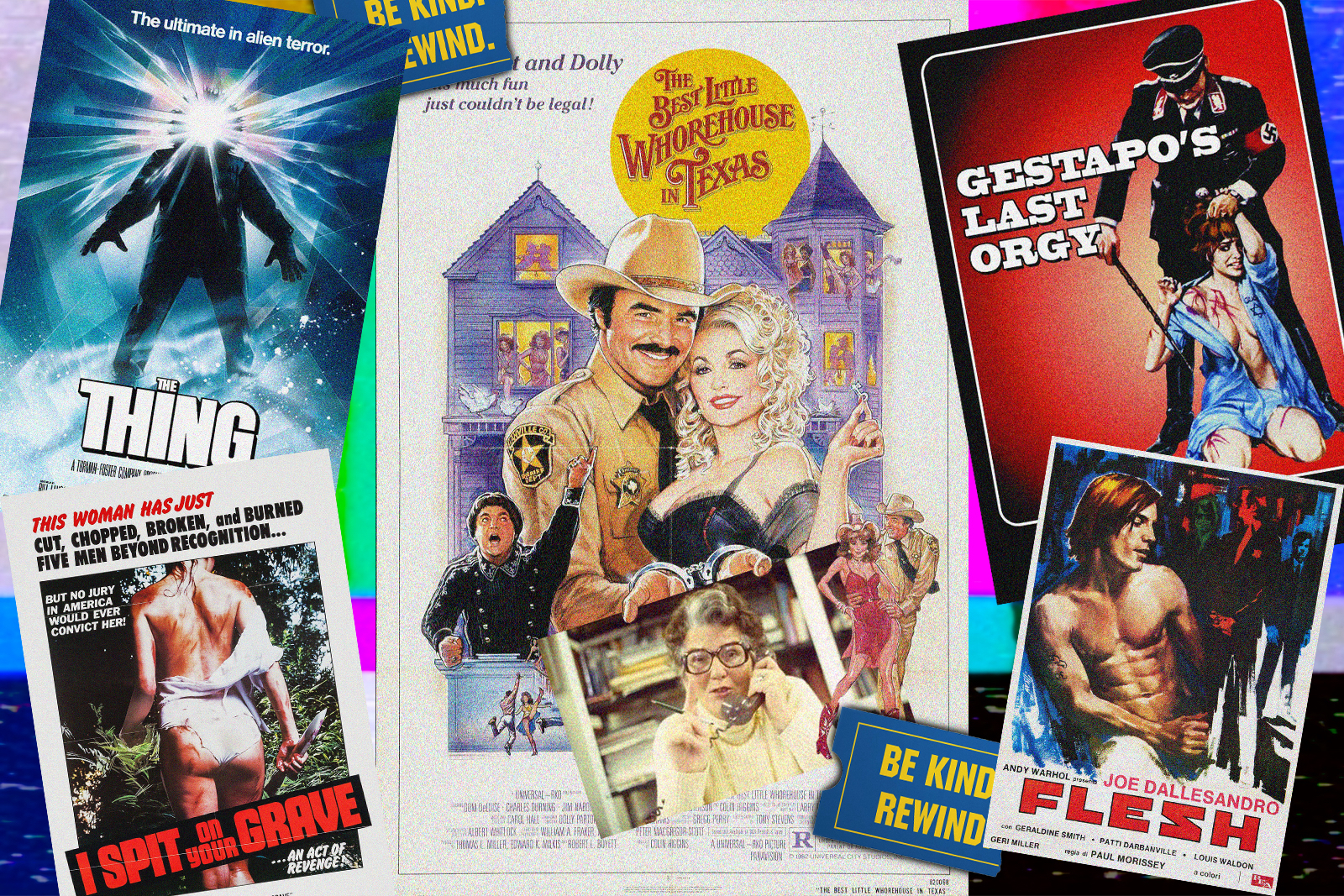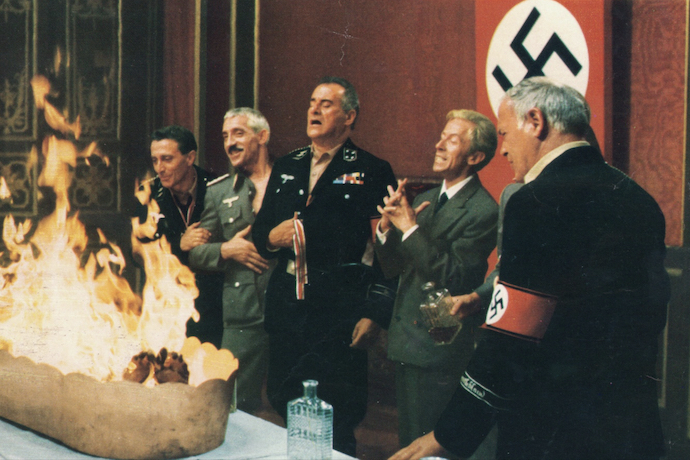
A Look Back at the UK’s ‘Video Nasty’ Controversy of the 1980s
Now that the spooky season is upon us, I thought it appropriate to revisit something that is well-known in horror circles, but that the general public might be less well-acquainted with. It represents a moral panic reminiscent of comic book censorship in the 1950s or the congressional hearings about music spurred on by the Parents Music Resource Center in the 1980s led by Tipper Gore, or even the ongoing controversies about violent video games today.
The place was the United Kingdom, the time was the 1980s under Margaret Thatcher, and the subject was horror movies.
The rise of home video had represented a turning point in the public’s access to movies, particularly low-budget ones. In the early days of VHS, many bigger distributors were hesitant to embrace the technology for fear of piracy. Thus, the market became flooded with unregulated, uncensored horror and exploitation movies. This was because these movies were able to take advantage of a loophole and were released in the British home video market essentially unrated. There were not yet laws on the books about how to treat and rate home video releases specifically, so these films were released in a sort of grey market for film fans and horror connoisseurs.
It was a conservative time in the United Kingdom, as demonstrated by the defining figure of the era, Prime Minister Margaret Thatcher. Thus, a groundswell of public concern against these movies and specifically children’s access to them came to the forefront of public discussion. The spearhead of the movement was socially conservative activist Mary Whitehouse, who had already become a figure of derision due to her criticisms of the popular, long-running sci-fi BBC program Doctor Who in the 1970s, among other complaints.
She, along with the National Viewers’ and Listeners’ Association she led, was a powerful voice in the movement to ban these movies from distribution or sale. She also helped coin the term “video nasty,” which was then adopted by the media as a colloquial term for the controversial tapes, though she claimed to have never watched any of the disputed titles.

Even in this, however, the apparatus for seizing the tapes was inherently flawed. For example, a copy of the 1982 musical The Best Little Whorehouse in Texas starring Dolly Parton and Burt Reynolds was confiscated because officials believed it was a pornographic film. Startled by the recent developments, the Video Retailers Association asked for clarification as to what titles were and were not considered acceptable. Soon enough, an official list of video nasties was compiled by the Director of Public Prosecutions.
The main fear was that children were watching these films and that it was influencing them in negative ways. The British tabloids, including The Daily Mail, in particular, helped to forward this line of thinking with sensationalistic headlines and articles. While adolescent viewing of horror movies may have been relatively widespread, a lot of it seemed to be no more than schoolyard bluster, as demonstrated by one survey which said that over half of students polled had claimed to have seen horror titles that didn’t actually exist. The notion of having a list of the controversial titles also potentially backfired, as one could now have an official record of the movies the government didn’t want them watching.
The video nasties were ranked in tiers, with the highest, dubbed “Section 1: Prosecuted films,” considered the most obscene and which made sellers and distributors liable for criminal charges. These include films I’ve seen like Herschell Gordon Lewis’ Blood Feast, an early slasher/splatter film from the early 1960s, as well as Lucio Fulci’s Zombi 2 from 1979, a low-budget exploitative movie from Italy that, as the title suggests, features zombies, including one that famously fights a shark. Other titles include Cannibal Holocaust, I Spit on Your Grave, A Bay of Blood, Night of the Bloody Apes, Gestapo’s Last Orgy, and Flesh for Frankenstein, the last of which featured some contributions from prominent artist Andy Warhol.
Sections 1 and 2, the latter of which was dubbed “Non-prosecuted films” comprised the official list of banned titles. The difference between the two was that distributors or sellers could be prosecuted under Section 1, but not 2. The most famous movie on the second tier was Sam Raimi’s The Evil Dead from 1981, a low-budget horror masterpiece that produced two great sequels, Evil Dead II (1987) and Army of Darkness (1992), as well as a 2013 remake, a television series that lasted from 2015 to 2018, and a fifth installment is due out next spring.

The film’s success not only set Raimi on the path of writing and directing future installments in the franchise, but also him helming the likes of Darkman, A Simple Plan, this year’s Marvel smash hit Doctor Strange in the Multiverse of Madness, and most famously, his blockbuster trilogy of Spider-Man movies starring Tobey Maguire in the lead role.
If having something as iconic and influential as The Evil Dead on the list doesn’t tell you something, surely the inclusion of Andrzej Żuławski’s 1981 psychological horror film Possession will. While The Evil Dead can come off as exploitative at times, Possession is downright artful and meditative, anchored by two incredibly strong lead performances by Isabelle Adjani and Sam Neill. The film premiered at the Cannes Film Festival, where Adjani won the festival’s Award for Best Actress for her role and the film itself was nominated for the prestigious Palme D’Or, the highest prize awarded at the festival.
Other titles in Section 2 include Cannibal Terror, Don’t Go in the House, The Witch Who Came From the Sea, Killer Nun, Dead & Buried, and The Funhouse, the latter of which was directed by The Texas Chain Saw Massacre’s Tobe Hooper and is credited as helping him get the directing gig for 1982’s smash hit Poltergeist.
Speaking of that famous chainsaw massacre, titles that would be most familiar to people probably reside in “Section 3: Video nasties,” which was a supplemental list to the two official previous sections. Distributors and sellers couldn’t be prosecuted for these titles, but they were liable to be seized, confiscated, and eventually destroyed. This tier includes the likes of not only The Texas Chain Saw Massacre, but also George Romero’s Night of the Living Dead, considered so significant stateside that it was eventually added to the prestigious National Film Registry. Romero’s 1978 sequel Dawn of the Dead was also included. John Carpenter’s The Thing, celebrating its 40th anniversary this year, is nowadays considered a milestone in sci-fi horror, but was nevertheless also on the list. Other famous titles include Don Coscarelli’s Phantasm (1979), Wes Craven’s The Hills Have Eyes (1977), the blaxploitation movie Foxy Brown (1974) starring Pam Grier, and even the first two entries in the Friday the 13th franchise.
Like most of these moral panics, the controversy only lasted a few years, and a law passed by the British Parliament in 1984 helped to clarify and provide a process by which movies could get approved for distribution on home video. The Video Recordings Act of 1984 made the British Board of Film Classification responsible for the certification of all movies distributed in the UK, either theatrically or on home video. All video releases had to comply, and those that were released before the act’s passing had to be resubmitted for classification.
This allowed many, but not all, of the video nasty titles to eventually find release, albeit with either minor, or in some cases substantial, edits made to them. The departure of longtime British Board of Film Classification head James Ferman in 1999 helped accelerate the process of relaxing the censorship, as both The Exorcist, which had never been considered an official video nasty but had been the target of Ferman’s ire specifically, and The Texas Chain Saw Massacre were released uncut to home video that year.
By the time the 21st century rolled around, many more of the video nasties were given permission to be released uncut, and popular horror movies in the “torture porn” subgenre like Saw hardly received the same level of scrutiny upon their initial release. But by my estimate, still around a quarter of the movies in any of the three tiers were never garnered a rerelease on home video in the UK, although the current ease of access of viewing these movies online or on streaming must be taken into account.
Although October is the time in which we celebrate ghosts, goblins, and ghouls, at the end of the day, there is nothing more frightening, nor more embarrassing in retrospect, than widespread censorship. Now, the entire “video nasties” controversy lives only as a strange footnote, and the titles on the official lists are sought out by horror enthusiasts all over the world.

